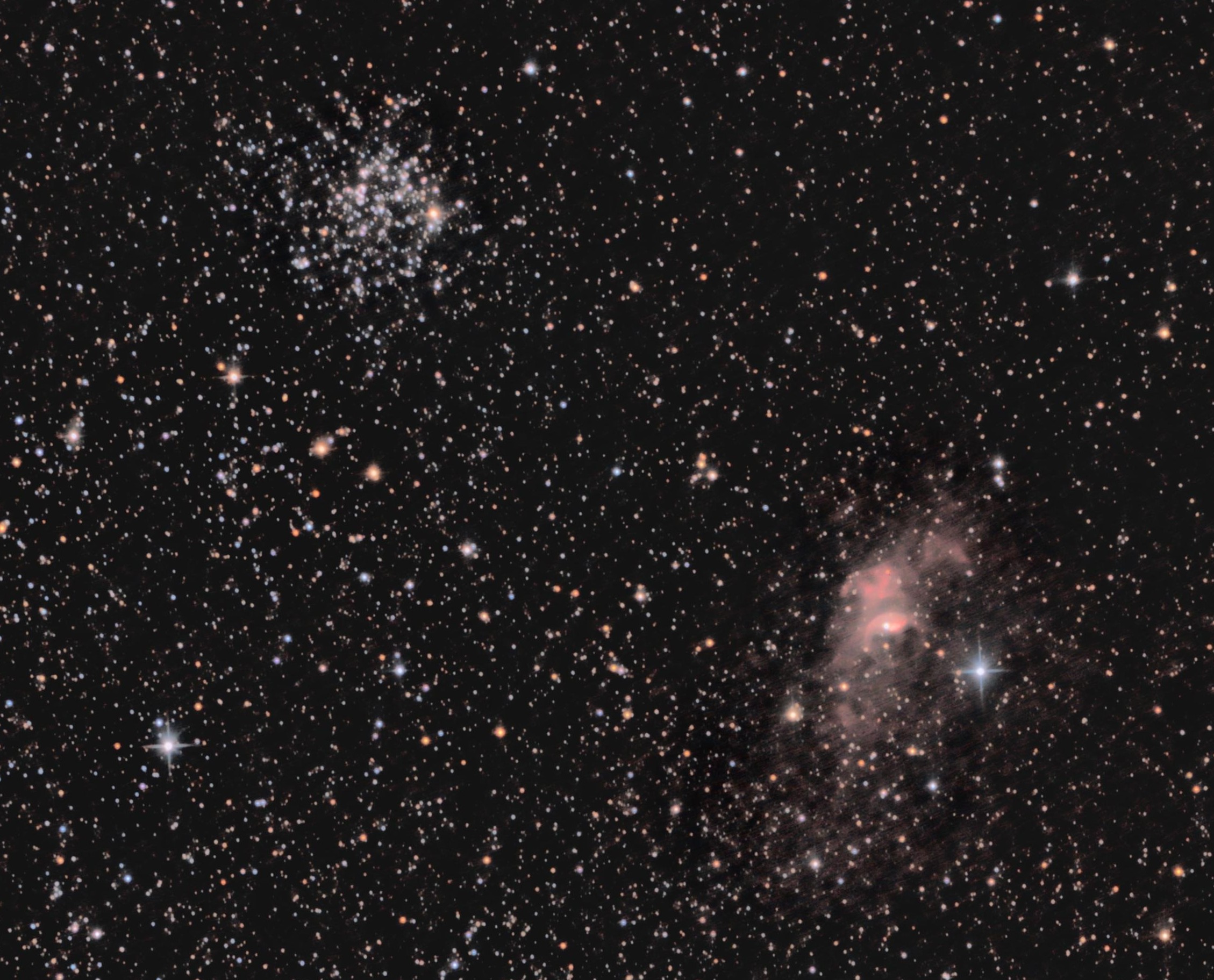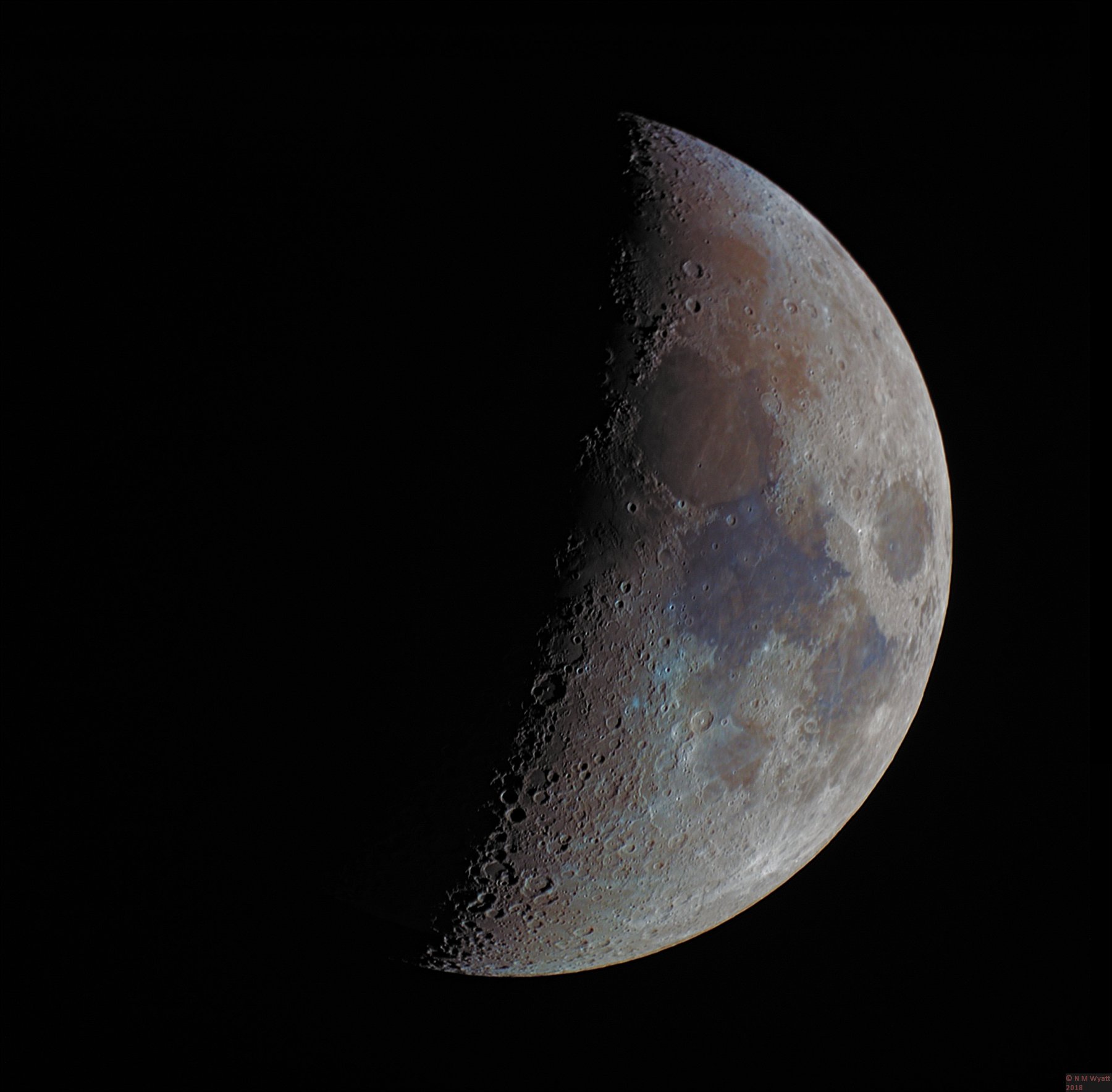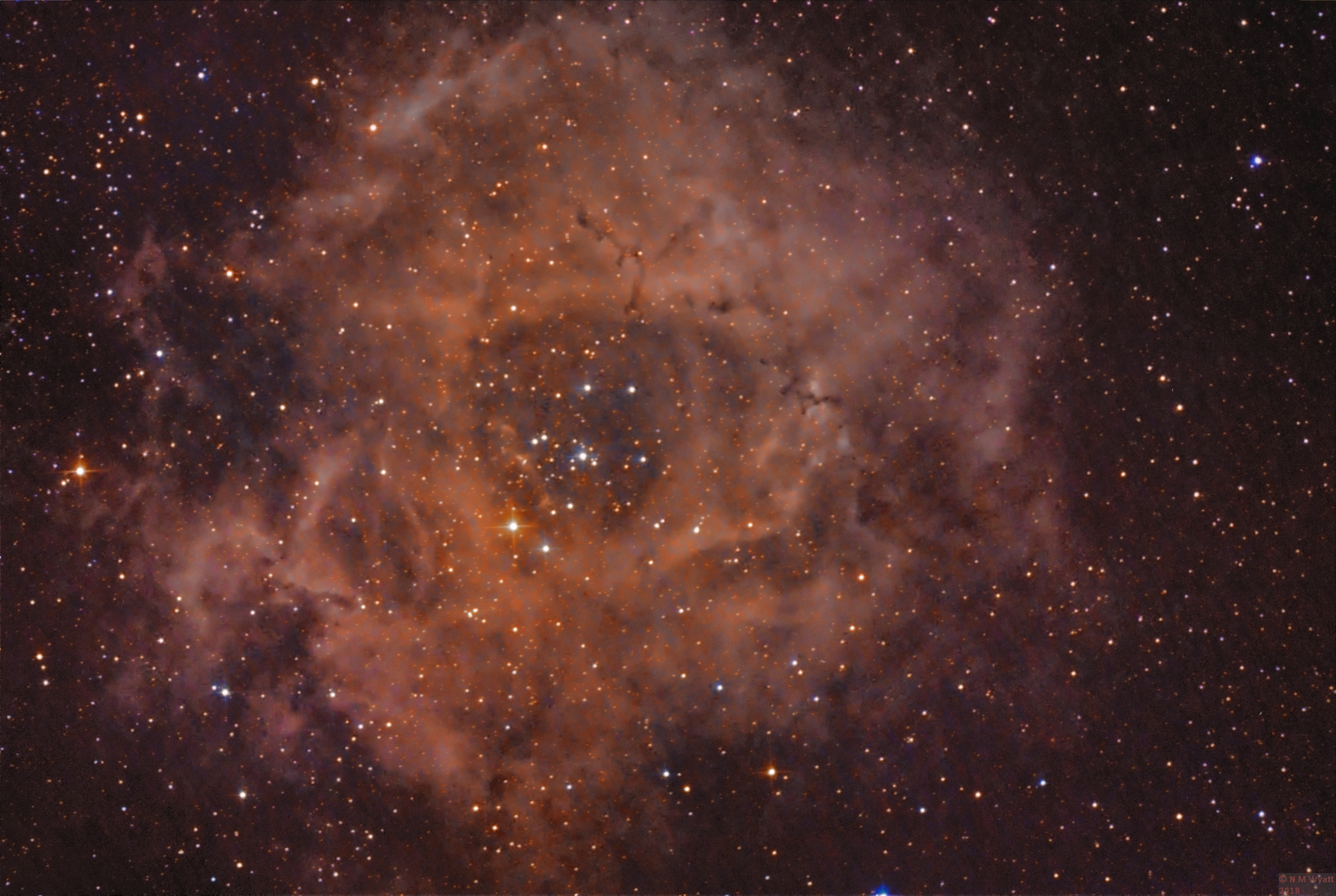2021 : 2020 : 2019 : 2018 : 2017 : 2016 : 2015
Image of the Month for December 2018: Bubble Nebula and Friends

Not a great month for astro imaging, unfortunately. One reasonable night under the moonlight caught the Bubble Nebula and the nearby M52 "Cassiopeia Salt and Pepper Cluster".
Image of the Month for November 2018: Blue Moon

This month a nice straightforward image - or is it? A stack of fifty images of the moon early one morning.
Image of the Month for October 2018: The Garnet Star and the Elephant's Trunk

Seriously, who gets to make up all these names? Actually the Garnet Star, Mu Cephei, is possibly the reddest naked eye star in the sky and was described by William Herschel, who stated it has "a very fine deep garnet colour". The Elephant's Trunk, a dark wiggly patch near bottom right, requires more of a stretch of the imagination.
Image of the Month for September 2018: Nebulosity around Sadr in Cygnus

This image combines a one-shot-colour DSLR image taken on 4 August with a narrowband Hydrogen Alpha image taken on 31 August as the red channel..
Image of the Month for August 2018: The Planets - Sweet!
Over the summer I have been imaging these four planets, Venus, Mars, Jupiter and Saturn as they have all been in the favourable positions in the last few months. That said, Mars and Saturn have been very low, making imaging a challenge. A major dust storm has also stripped Mars of much of its detail, despite this being the closest approach it will make to earth for a century or so. Click the image for more detail.
Image of the Month for July 2018: Meteor!

Something rather different this time, a meteor trail detected by picking up the return from the Graves Space Radar in southern France. The horizontal axis is frequency and the vertical is time. The 'blob' is the static trail left behind by the meteor, and the thin trail is the 'head' of the meteor moving across the sky and dropping in frequency due to doppler shift. This was probably an 'Arieted' meteor coming in low from west.
Image of the Month for June 2018: Io transiting Jupiter

The moon Io pases in front of Jupiter, casting its shadows on the clouds below, on 5 May 2018.
Image of the Month for May 2018: Markarian's Chain

Revisiting the subject of an earlier image of the month, Markarian's Chain, with much more natural colour and greater detail, delivered by a combination of cooling, guiding and longer total exposure.
Image of the Month for April 2018: The Lunar X and V in Colour

In February it was almost perfect observing conditions for the two well-known ‘lunarisms’ the ‘X’ and ‘V’. These are both effects caused by crater rims/ridges that reach up above the lunar shadow. They can both be seen along the lower part of the lunar terminator (the line between light and shadow).
I used my astro-modded and cooled Canon 450D (although the cooling was switched off) with a Celestron C90 Maksutov on a hybrid bresser/skywatcher EQ mount. Despite being a small scope this gives a near ideal match of resolution with sensor so works well for the bright moon, with the advantage that distortion due to poor seeing is minimised compared to my larger newtonian.
98 RAW frames were pre-processed in PIPP using AHD debayering and preserving the colour information to give centred and cropped 16-bit TIFFs.
These were stacked in Autostakkert3! using rather large (200 pixel) boxes. 60% of frames were stacked. The resulting image was duplicated. One was processed as a ‘conventional’ mono image with a relatively light hand – adjustment of curves to reduce the contrast between the rim and terminator, noise reduction was unnecessary, followed by Lucy-Richardson deconvolution. As the image was already sharp a combination of a small kernel with stronger than usual deconvolution was successful and did not create artefacts, notably no ringing was created along the rim, often a problem with deconvolution.
The second image was also adjusted to reduce contrast and using a temporary high-saturation layer the colour balance was adjusted, the main requirement being reducing the red content to compensate for the astro-modification of the camera. The high saturation layer was then removed. Cycles of a soft light + luminance layers process to gently increase saturation were applied – this approach is less likely to ‘blow out’ colours and keeps them more faithful than simply increasing saturation.
The mono version of the image was then applied over the colour one as a luminance layer and merged down.
I am very pleased with the final image as it captures one of the classic moments in the moon’s monthly phases and faithfully demonstrates the faint colours of the lunar surface without over exaggerating them.
Image of the Month for March 2018: The Horsehead and Flame Nebulas in Ha

This is a 7nm hydrogen alpha narrowband image taken using a cooled and astromodified Canon 450D with a special Baader filter.
Image of the Month for February 2018: The Rosette Nebula
Revisiting one of the most remarkable objects in the sky, blending a 7nm hydrogen alpha narrowband image with a one-shot colour image, both taken with the modified and cooled Canon 450D. Using the Ha layer reduces the stars (small ones disappear) and highlights the nebula which is composed of hot hydrogen.
Image of the Month for January 2018: The California Nebula

The California Nebula, a narrowband Ha image combined with a one-shot colour image.




